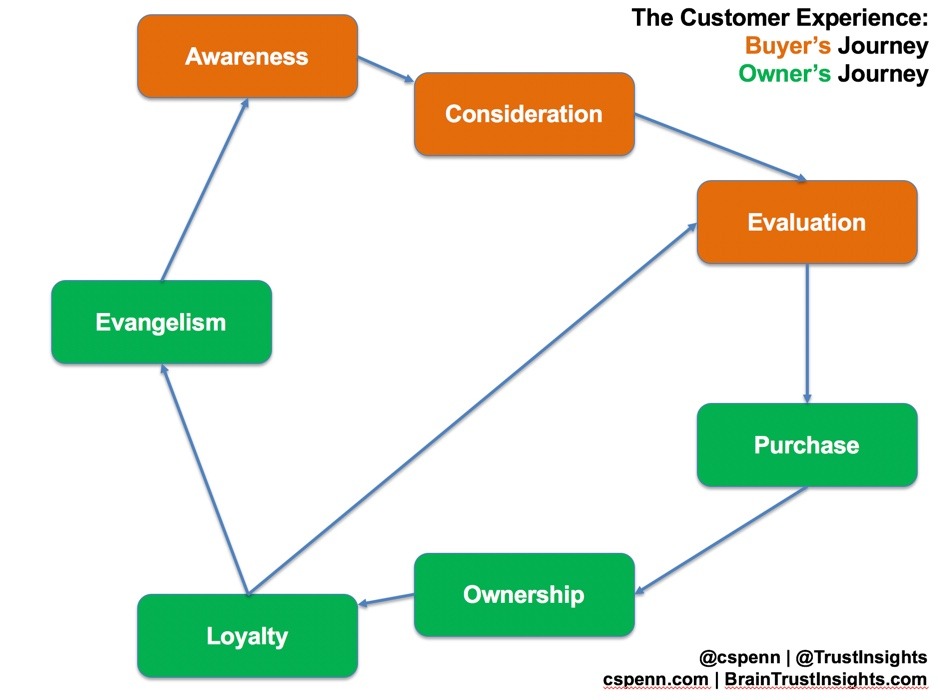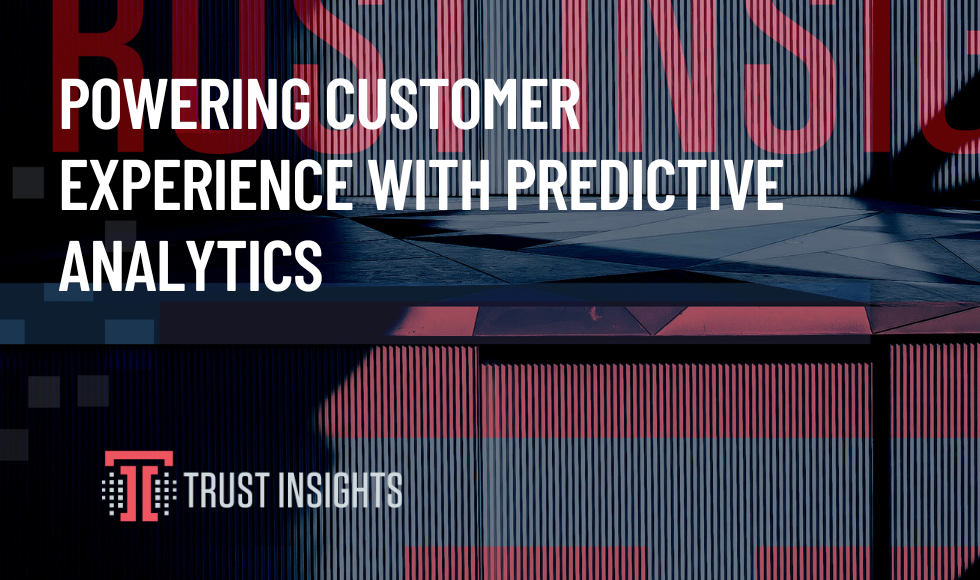The customer experience is arguably the most important part of your business. Without customers, you aren’t able to meet any of your business goals. Without a solid customer experience, you will have a hard time attracting and keeping new business.
How do we even start to tackle the customer experience and understand what our audience wants? One piece at a time. During this series, we’ll explore each step of the customer journey and how you can use predictive analytics to create more effective marketing plans for your customer experience.
Read the previous posts here:
- Introduction:https://www.trustinsights.ai/blog/2018/09/powering-customer-experience-with-predictive-analytics-introduction/
- Planning: https://www.trustinsights.ai/blog/2018/10/powering-customer-experience-with-predictive-analytics-planning/
- Awareness: https://www.trustinsights.ai/blog/2018/10/powering-customer-experience-with-predictive-analytics-awareness/
- Consideration: https://www.trustinsights.ai/blog/2018/10/powering-customer-experience-with-predictive-analytics-consideration/
- Evaluation: https://www.trustinsights.ai/blog/2018/11/powering-customer-experience-with-predictive-analytics-evaluation/
- Purchase: https://www.trustinsights.ai/blog/2018/11/powering-customer-experience-with-predictive-analytics-purchase/
- Ownership: https://www.trustinsights.ai/blog/2018/11/powering-customer-experience-with-predictive-analytics-ownership/
- Loyalty: https://www.trustinsights.ai/blog/2018/11/powering-customer-experience-with-predictive-analytics-loyalty/
Whew! We made it to the last phase of the customer experience: Evangelism. Once you’ve made someone aware of your brand, they have decided to purchase something, you’ve resolved any issues they have and they become a repeat customer – you want them to spread the word about their experience with you so that you can attract more customer just like them.

Customer Review Data
We live in an age where people always check reviews before making a purchase. Customers tend to be hesitant to make a purchase if there is no information about the company or if the company has mostly negative reviews. You have sites like Yelp that allow you to review pretty much any kind of business. Facebook has a feature that allows people to ask for recommendations of services and companies. Products live and die by Amazon reviews. You can use sites like homebuilder to get reviews of contractors from real customers. Using predictive analytics, you can determine when you’re likely to get an increase of customer reviews, as well as the general sentiment around the review itself. Customers who are happy and satisfied with their products and service are more likely to leave positive reviews on your behalf, becoming your evangelists.

Review volume
Similar to customer support call volume, you’d want to know when to expect reviews – beyond the expected seasonality. Knowing the peaks and valleys of expected reviews can help you plan out your messaging and marketing strategies. Yelp is one of the most popular review sites where people can leave their thoughts and ratings. You might also look at Google reviews, Facebook reviews if you have a business page or even some of the technical review sites such as G2.
Review sentiment
Machine learning can categorize content into positive, negative, and neutral sentiment. In addition to volume, you’ll want to get an understanding of the sentiment with each review. In the example above we kept it simple and took a look at the number of Yelp stars associated with each review. The scale is between zero and five, five being the best rating. if you’re looking at a high volume of reviews that are mostly negative you have some research to do, trying to understand the reasoning behind unhappy customers. Perhaps there were issues with the latest version of your product or your customer support staff wasn’t as responsive as your customers wanted.
The thing that most people get wrong about the customer experience is confusing the buyer’s and owner’s journey. Each part should be treated separately with its individual phases. With proper planning, you can apply predictive analytics to each phase of the customer experience. The end result will be a stronger and more tailored marketing strategy.
Still have questions or want to get starting with your own predictive customer experience? Let us know!
|
Need help with your marketing AI and analytics? |
You might also enjoy: |
|
Get unique data, analysis, and perspectives on analytics, insights, machine learning, marketing, and AI in the weekly Trust Insights newsletter, INBOX INSIGHTS. Subscribe now for free; new issues every Wednesday! |
Want to learn more about data, analytics, and insights? Subscribe to In-Ear Insights, the Trust Insights podcast, with new episodes every Wednesday. |






